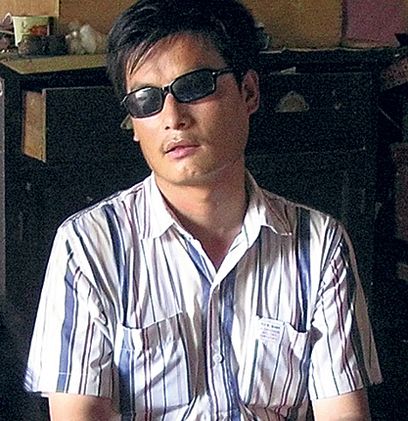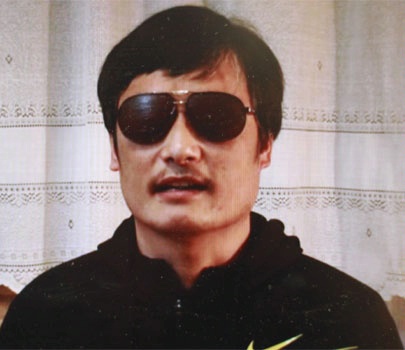A shocking report in The Financial Times has finally revealed the true extent of China’s one child policy – a policy which has resulted in a massive imbalance between young men and women and which has targeted girls babies in a relentless campaign of gendercide. Over decades, using taxpayers’ money, this is a policy which has been indirectly aided and abetted by successive British Governments.
The report – which is based on official data from the Communist Party’s own health ministry – suggests that Chinese doctors have undertaken over 330m abortions during the 40 years since China began to implement the one child policy.
First introduced in 1971 I began to challenge the policy in 1980, after my election to the House of Commons and over the years which have followed I have questioned the millions of pounds which Conservative and Labour Governments – enthusiastically supported by the Liberals and then Liberal Democrats – have poured into agencies which have, in turn, funded the Communist Party’s Chinese Population Association.
At one memorable meeting with a Secretary of State for International Development the air was blue with undeleted expletives and four letter words as I was accused of undermining development policies which relied on population control. I told the politician concerned that we should be attacking poverty not people and that it was an egregious violation of the rights of women when they are forcibly aborted or sterilised. For the UK to have channelled money into agencies which have in turn funded those carrying out coercive population measures makes us collaborators in these violations.
Some years after that meeting, during a visit to China, and in conversation with Chinese officials, I was surprised when they privately gave me quiet encouragement in opposing the one-child policy.
In Beijing there was also more sympathy than I had anticipated when I took up the case of Chen Guangchen, the blind human rights activist who had single-handedly exposed the forced abortion of over 120,000 women in the Shandong province.
While Chen Guangchen was incarcerated during a four year prison sentence – and then kept under house arrest – I told senior Chinese officials that I thought that one day Chen would be seen as a national hero. It was striking that no one contradicted me or shouted me down. Of course, many officials have suffered under these policies too. Hardly anyone in China is unaffected.
Chen’s bravery and the clarity with which he saw the economic and demographic consequences of a policy which evaded sighted people gradually opened the space for more honest debate within the country.
The micro-bloggers in China – some of whom I recently met in London – took up Chen’s case and began to question the policy. One of those bloggers has more than 5 million followers and is able to exert much greater influence than party cadres. In the absence of a free press the bloggers represent the best hope for changing opinion and attitudes.
Clearly this more open debate, and public exposure of horrifying stories like that of a women coercively aborted, and whose seven month unborn baby was then left by her side on her bed, as a warning not to become pregnant again, are having a radicalising effect on the population.
The scale of what has been done is phenomenal. Since 1971, Chinese doctors have aborted 336m women and undertaken 196m sterilisations. 403m intrauterine devices have been inserted into women, often without their consent.
The Chinese say that their population of 1.3 billion would be about 30% bigger if they had not pursued these draconian policies. Elsewhere, when poverty and infant mortality are reduced population has fallen naturally.
By comparison, since legal abortion was introduced in America in 1973, in a country about a quarter of China’s size, around 50 million abortions have been undertaken. In the UK, with a population of around 60 million, the figure is 7 million abortions.
The attrition rate in China has not been getting better.
The official figures show that since the 1990s around 7 million babies are aborted every year, around 2 million men and women have been sterilised, and another 7 million women have been required to have intra uterine devices fitted.
For years economic analysts have been warning about the imbalances and distortions which this policy has created. The official data now confirms the inevitable. Not only are there 37 million more Chinese men than women, globally the sex-selection abortion of little girls means that between 100 million and 200 million females are missing in the world. But there are other implications of this social engineering.
The ratio of children and retirees shows that for the first time the one is less than the other – meaning that (as in child-poor Europe) there simply will not be the children to support those who have retired. One Chinese economist, Ken Peng, said: “This makes China’s population look more like a developed country than a developing one, which is a key disadvantage in labour-intensive industries,”
The new Chinese leadership has hinted that it will introduce some welcome reforms – such as the dismantling of the network of re-education centres which indoctrinate citizens in Communist Party beliefs. Some observers also think they may also re-examine the one child policy.
One commentator, Mr He Yafu, has suggested that one likely change to family planning rules would be to permit two children for parents who were both single children themselves. He said that the policy, in place on a trial basis in some cities, could be implemented nationwide. But he added that such a modest change would not be enough to deal with the accelerating problem on an aging and unbalanced population; and even these modest changes have been attacked by die-hard officials in the Communist Party’s family planning secretariat.
Yan Yuxue argued that “the idea of easing the ageing problem by increasing the fertility rate is like drinking poison to quench thirst.”
So, despite the more open criticism of this appalling policy we should not assume that it will simply disappear without a fight.
Nor should we be seduced by the argument that the Chinese Government may allow some couples to have two children. The key question is not the number of children but the principle of State interference in the intimate life of a family and the coercion which the State uses to enforce limits. Even with a two-child policy, women will still be subject to forced abortion if they get pregnant without a birth permit.
And, of course, a “two-child policy” rather than a “one child policy” will not discourage gendercide, the sex-selective abortion of baby girls. There is already plenty of evidence of rampant gendercide in those districts where couples can have a second child if their first is female. Forced abortion up to the ninth month of pregnancy, and gendercide – the sex-selective abortion of baby girls – will undoubtedly persist until China abolishes all coercive birth limits.
What amazes me is that those who would normally be so outspoken against cruel abuses of human rights, and against discriminatory practices targeted at women, have been so quiet for so long. The moment abortion or population are mentioned the shutters come down and the world simply looks the other way as 330 million women are forcibly aborted. 

Questions about the number of children in Sudan who are (1) affected by malnutrition, and (2) no longer in education, due to the war; and about the percentage of UK aid to Sudan that (1) reaches recipients via emergency response rooms, and (2) supports emergency response rooms.
Lord Collins of Highbury, the Foreign,...


